Four & Twenty Blackbirds
The Caldecott Medal in the 1970's
Welcome to Four & Twenty Blackbirds, CMNH's blog series on the history of the Caldecott Medal and the children's book illustrations that have been fortunate enough to be honored and awarded by the Caldecott committee.
We're now entering one of the most enigmatic decades of the 20th Century. The tumultuous events of the previous decade spiral into the beginning of the 1970's and form cultural rivulets leading to political and economic upheaval, a renaissance in American film and the ascendancy of disco, punk and progressive rock music. The bright eye-popping color palette of the previous decade falls away to the earthier tones of what became known as the "Me Decade." The 70's earned the "Me Decade" nickname due to the overwhelming impression that the younger generation, unlike the one before them, was more interested in their own lives than the world at large.
A quick glance at the Caldecott Honorees and Medal Winners from the decade couldn't paint a more different picture. Of the ten books whose illustrators won the Caldecott Medal for elevating the work to the status of, "most distinguished American picture book for children," seven of them directly dealt with other cultures, religions and ways of life far removed from the average American child that was the likely target audience for these stories when they were published. African folktales - with an extra emphasis on the Ashanti and Swahili cultures - popped up repeatedly among the honorees and winners throughout the decade, as did Jewish legends, Pueblo mythology, the Quaker movement, Japanese fairy tales and Native American life.
Let us now look at some books from the grand, misunderstood decade that was the 1970's. A book about amphibian friendship. A book about a donkey. And a book about a witch.

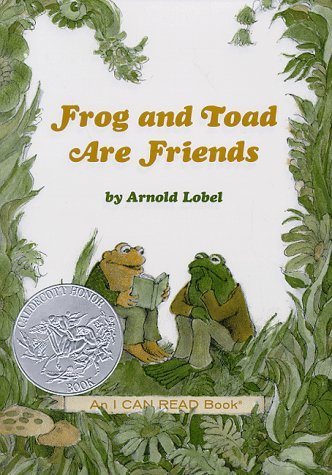 Who: Arnold Lobel (born in Los Angeles, CA, 1933)
Who: Arnold Lobel (born in Los Angeles, CA, 1933)
Book: Frog and Toad are Friends / Harper & Row / 1970
Writer: Lobel
Plot: This beloved children's book was Lobel's tenth published work and the first of the "Frog & Toad" books - the series that made Arnold Lobel a household name. Broken up into five short stories - "Spring", "The Story", "A Lost Button", "The Swim," and "The Letter" - take a look at the simple every day lives of the more adventurous Frog and his reserved, but stalwart, friend, Toad. Many children and parents used Frog and Toad are Friends as a jumping off point to talk further about subjects as diverse as forgetfulness ("The Lost Button"), sadness and happiness ("The Letter"), body image/changes and shyness ("The Swim"), restlessness ("Spring") and, expectedly, friendship ("The Story").
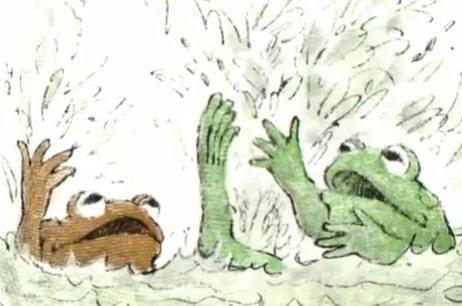
Misc: Frog and Toad are Friends was named as a runner-up for the Caldecott Medal when the honored list of books was announced in 1971. But Lobel had good company as Maurice Sendak's In the Night Kitchen and Blair Lent's The Angry Moon were his fellow runners-up. Gail E. Haley's A Story a Story was named the Caldecott Medal winner for the 1970 class of nominees. Lobel would again be named as a Caldecott runner-up the following year for 1971's Hildilid's Night and would finally win the prestigious award ten years after his first nomination for 1980's Fables. Lobel went on to write and illustrate three more Frog & Toad books: Frog and Toad Together, Frog and Toad All Year and Days with Frog and Toad. Years after Lobel's untimely death (he passed in 1987), his daughter Adrianne colored three uncolored manuscripts of his that were found in an estate sale and were released in 2009 as The Frogs and Toads All Sang and Odd Owls and Stout Pigs: A Book of Nonsense.
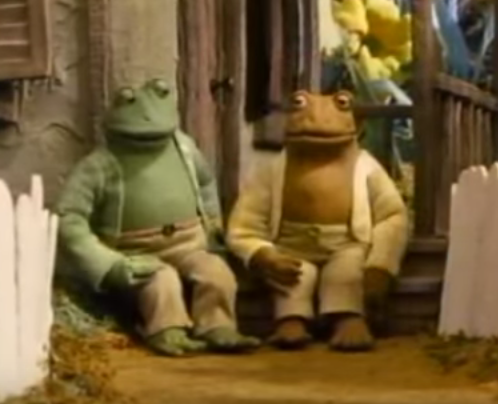
Many children who became acquainted with Frog and Toad in the 1970's and 80's may recall a series made by Churchill Films that adapted the first Frog and Toad books into 20 minute claymation shorts. The series was narrated by Lobel. A Year with Frog and Toad, a musical, premiered on Broadway in 2003. Commissioned by Adrianne - who also designed the set - the stage production was adapted by her husband, actor Mark Linn-Baker, who also went on to play Toad in the original cast. In 2012, the School Library Journal listed it at #15 on their list of the, "Top 100 Picture Books".
Availability: Frog and Toad are Friends, as well as the entire Frog and Toad series, is available in paperback, hardcover and digital formats as well as larger collected editions of the complete series.
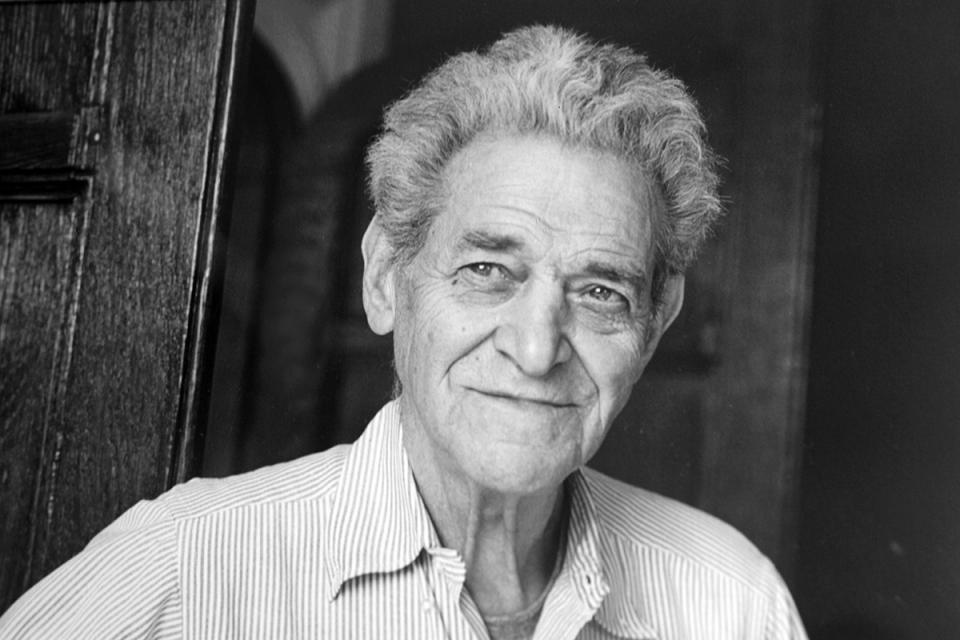 Who: William Steig (born in Brooklyn, NY, 1907)
Who: William Steig (born in Brooklyn, NY, 1907)
Book: Sylvester and the Magic Pebble / Windmilll Books / 1969
Writer: Steig
Plot: Sylvester is a donkey. Sylvester lives in the town of Oatsdale. One of Sylvester's favorite hobbies is collecting rocks, stones and pebbles. The more unusual and strange the rock, the more Sylvester wants it 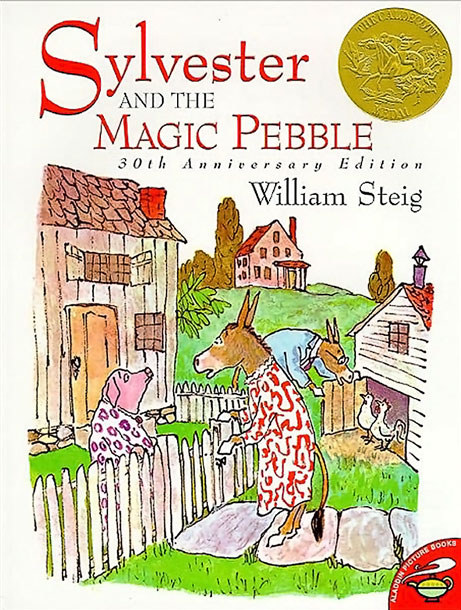 for his collection. One day, Sylvester comes across the strangest piece of sediment he's ever seen: a magic pebble! This pebble grants wishes and Sylvester can't wait to try it out. Unfortunately, a frightening lion crosses Sylvester's path before he can get to his wishes and in his scared state, Sylvester quickly wishes he was a rock in order to hide from the lion. *POOF* Sylvester's wish is granted. But in becoming a rock, Sylvester loses contact with the pebble. Without physically touching the pebble, he can't wish
for his collection. One day, Sylvester comes across the strangest piece of sediment he's ever seen: a magic pebble! This pebble grants wishes and Sylvester can't wait to try it out. Unfortunately, a frightening lion crosses Sylvester's path before he can get to his wishes and in his scared state, Sylvester quickly wishes he was a rock in order to hide from the lion. *POOF* Sylvester's wish is granted. But in becoming a rock, Sylvester loses contact with the pebble. Without physically touching the pebble, he can't wish 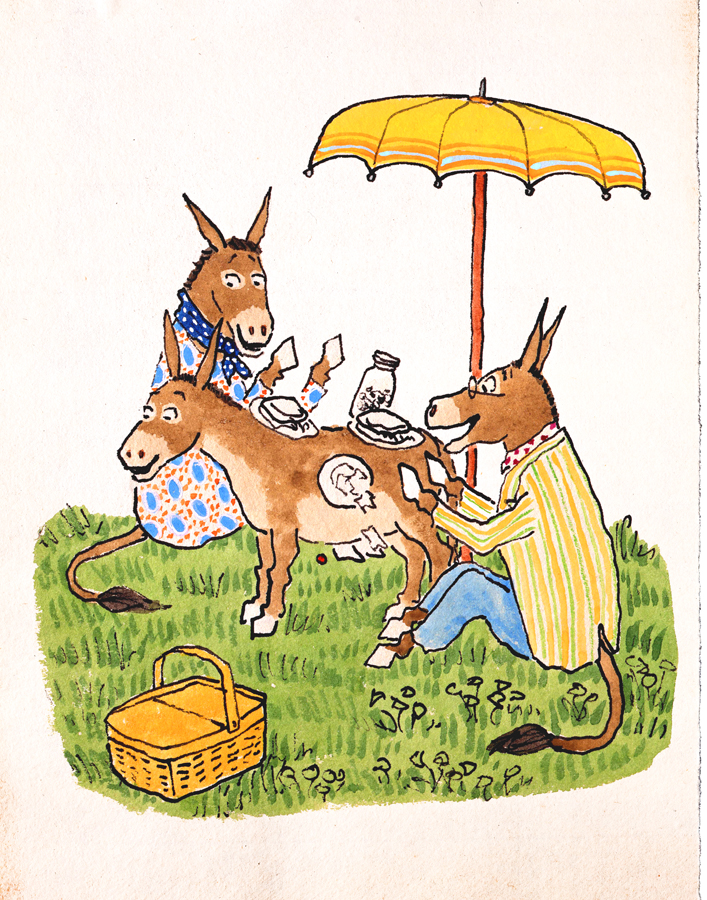 himself back to his donkey form. Will Sylvester be trapped as a rock forever? Will Sylvester's mom and dad ever find their son? And what will happen to the magic pebble?
himself back to his donkey form. Will Sylvester be trapped as a rock forever? Will Sylvester's mom and dad ever find their son? And what will happen to the magic pebble?
Misc: You already know Steig even if you've never read Sylvester, which, in addition to winning the Caldecott Medal in 1970 was also a finalist for the National Book Award. And maybe you've never read The Amazing Bone, his Caldecott Honor book from 1976 or Doctor De Soto, a 1983 National Book Award winner (an award shared with multiple Caldecott winner Barbara Cooney for Miss Rumphius). His biggest contribution to the pop culture landscape, and what made him a household name eleven years after it was written, was a small book from 1990 titled Shrek!. 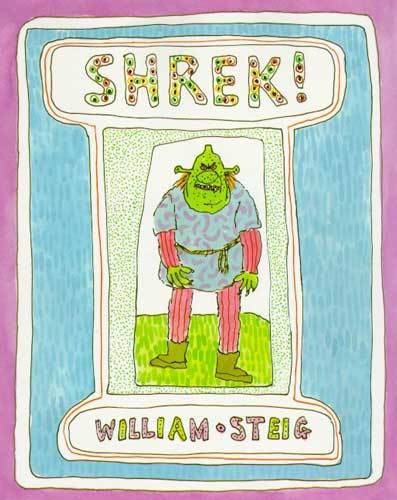 Perhaps you've heard of it? And the four film franchise it spawned? Going on to win the inaugural Academy Award for Best Animated Feature? But while Shrek!, both the book and the films, have been generally well loved by the populace, Sylvester and the Magic Pebble ran across some controversy not long after it was published. Despite eventually being named as one of the "100 Best Books of the Century" by the National Education Association, upon its release Sylvester saw many school districts and
Perhaps you've heard of it? And the four film franchise it spawned? Going on to win the inaugural Academy Award for Best Animated Feature? But while Shrek!, both the book and the films, have been generally well loved by the populace, Sylvester and the Magic Pebble ran across some controversy not long after it was published. Despite eventually being named as one of the "100 Best Books of the Century" by the National Education Association, upon its release Sylvester saw many school districts and 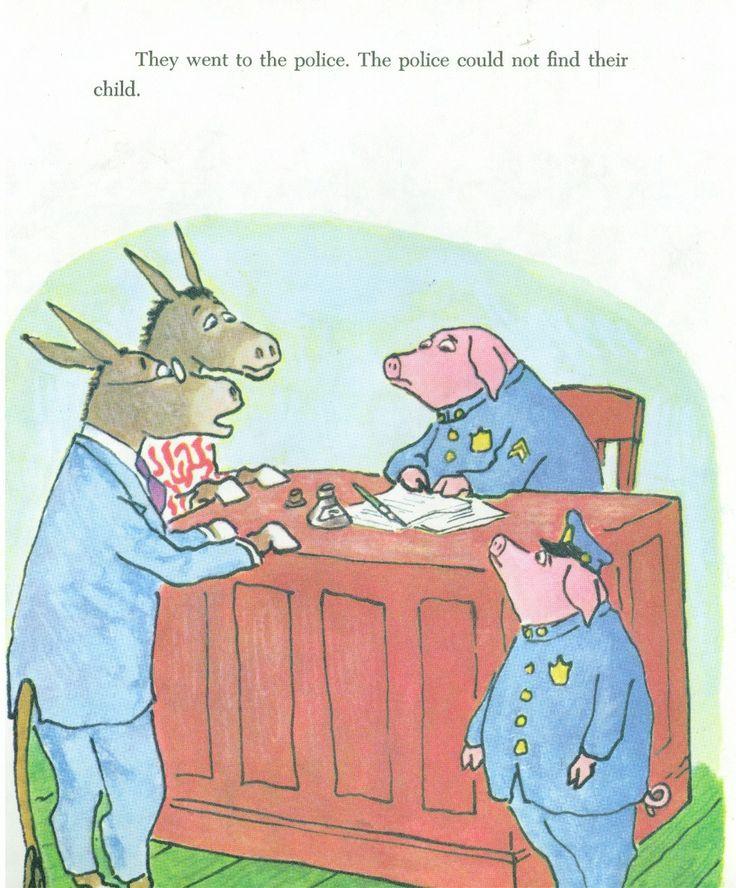 organizations challenge the book due to the fact that police officers in the town of Oatsdale were portrayed as pigs. The popular defense of the book pointed out that several different professions in Oatsdale were represented by pig employees, but that still caused Sylvester to be seen as subversive for its time. Younger children (pre-K) may have some issues with the possibility that Sylvester and his parents may never reunite and the twist of magic gone wrong (the staple of oh-so-many fables) might cause anxiety in those that aren't used to this fairy tale trope. Regardless, a William Steig picture book is a necessity in any family library. Luckily, he wrote nearly three dozen books just for children - the majority of which are still in print.
organizations challenge the book due to the fact that police officers in the town of Oatsdale were portrayed as pigs. The popular defense of the book pointed out that several different professions in Oatsdale were represented by pig employees, but that still caused Sylvester to be seen as subversive for its time. Younger children (pre-K) may have some issues with the possibility that Sylvester and his parents may never reunite and the twist of magic gone wrong (the staple of oh-so-many fables) might cause anxiety in those that aren't used to this fairy tale trope. Regardless, a William Steig picture book is a necessity in any family library. Luckily, he wrote nearly three dozen books just for children - the majority of which are still in print.
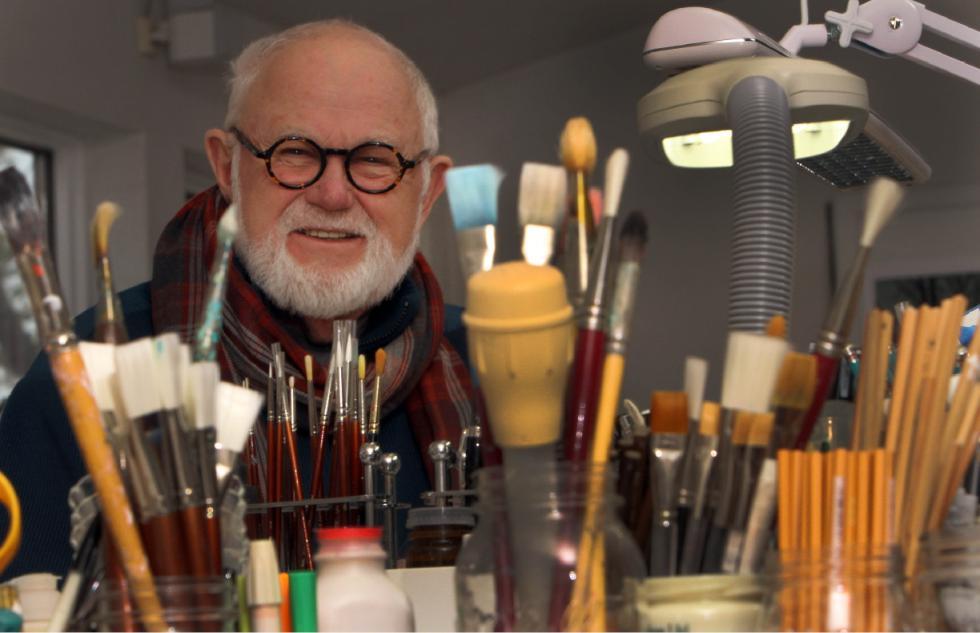 Who: Tomie dePaola (born in Meriden, CT, 1934)
Who: Tomie dePaola (born in Meriden, CT, 1934)
Book: Stegra Nona / Simon & Schuster / 1975
Writer: dePaola
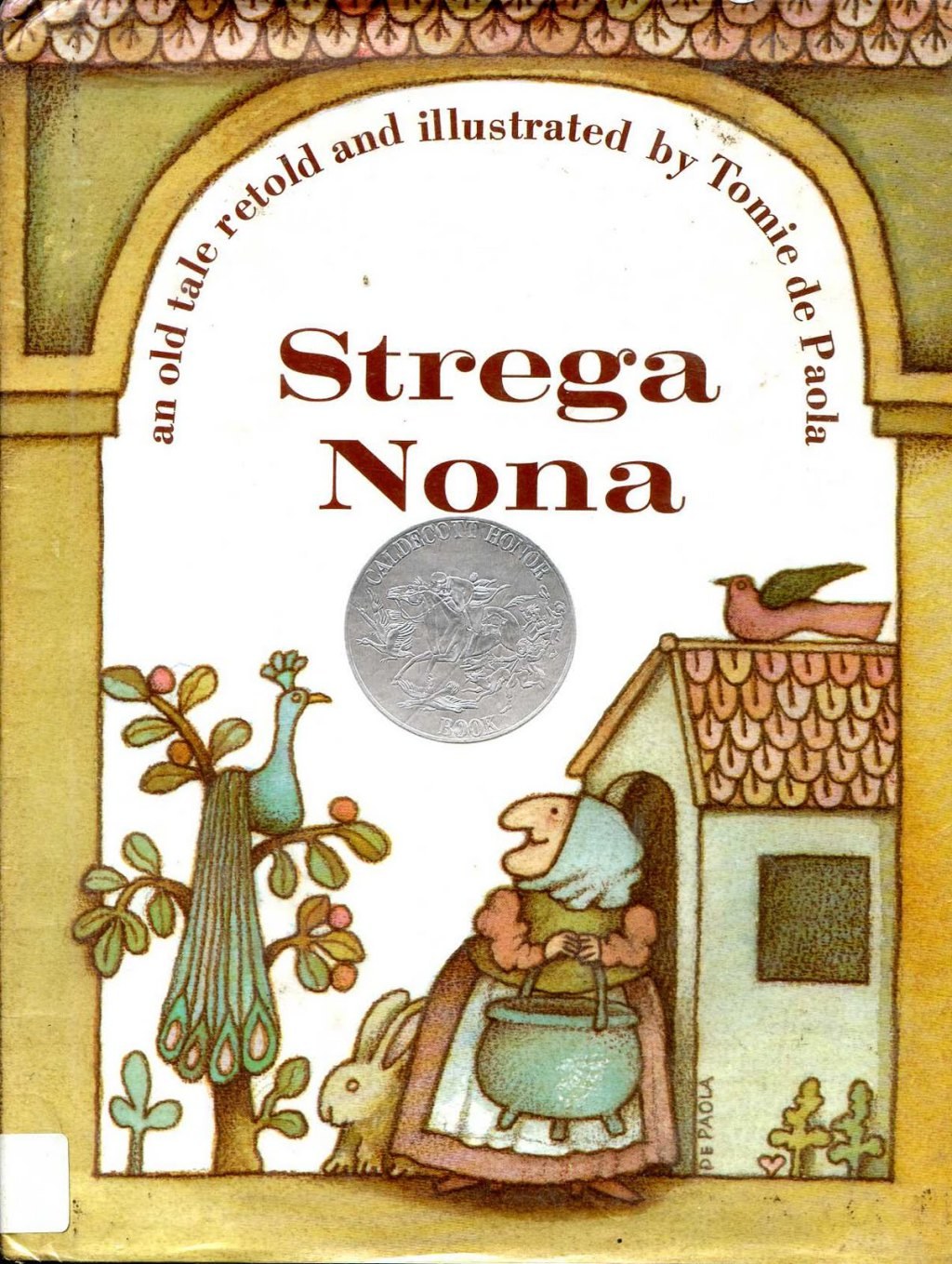
Plot: Strega Nona takes place in Calabria, in the southern region of Italy. Stega Nona (translated from Italian as "Witch Grandmother") is well known and well liked in her small village. Her special remedies are used by the villagers for everything from love connections to wart removal. Realizing she's not getting any younger, Strega Nona hires an assistant named Big Anthony to help her with household tasks. However, due to Big Anthony's inability to "pay attention" he incorrectly performs a spell while she is out of town. His attempt to provide pasta to the villagers works a little too well and soon the entire town is overrun with a plethora of pasta with no signs of stopping. Will Strega Nona return to the village in time to save everyone? Will the the magic pasta pot ever stop producing pasta? Will Anthony be punished? 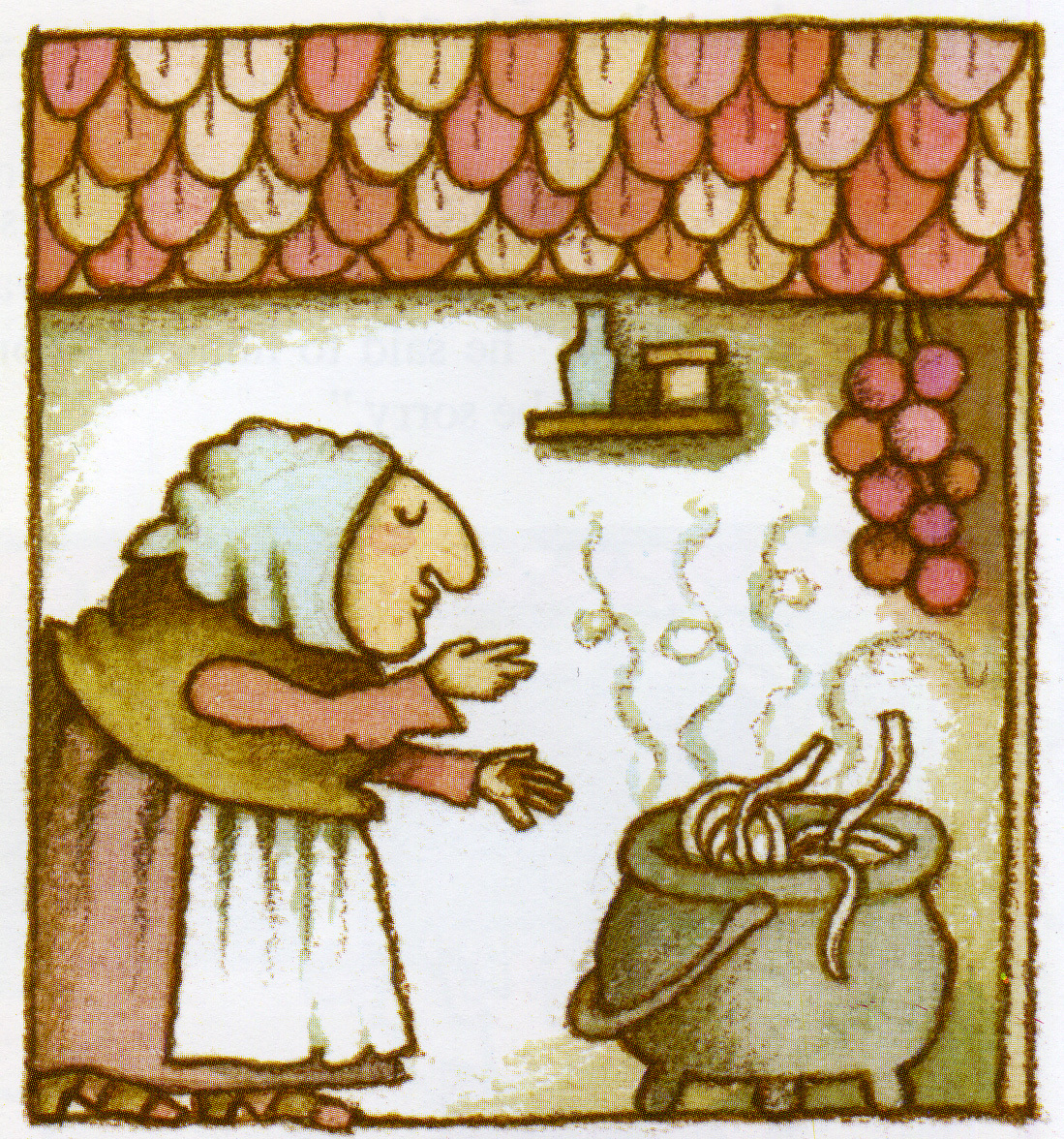 Will he learn his lesson? Respect, listening, consequences and kindness are all lessons learned through dePaola's recognizable and humorous illustrations and dialogue.
Will he learn his lesson? Respect, listening, consequences and kindness are all lessons learned through dePaola's recognizable and humorous illustrations and dialogue.
Misc: Only two books published in 1974 were honored in 1975. The winner, Arrow to the Sun by Gerald McDermott and the sole runner up Jambo Means Hello: A Swahili Alphabet Book by Tom Feelings. The 1976 list, which honored the crop of books published in '75 only increased the list to three. Strega Nona was named the runner-up along with Peter Parnall's The Desert is Theirs. The winners were husband and wife team Leo & Diane Dillon for Why Mosquitos Buzz in People's Ears, a book that translated several African legends. The Dillons would also be awarded the Caldecott in 1977 for their more in-depth look at those legends in Ashanti to Zulu: African Traditions. dePaola, who taught art at several institutes of higher learning including New England College and Colby-Sawyer College in New Hampshire before devoting himself full-time to children's books, has published over 120 works - 11 of which are Strega Nona stories (including Strega Nona Meets Her Match, Strega Nona Takes a Vacation and Strega Nona's Magic Lessons.) Though "Strega Nona" and the characters are wholly original characters created by dePaola, the general plot is an update of the Germanic fairytale, The Magic Porridge Pot. dePaola, who still resides in New London, NH, was honored by being named the U.S. nominee for the international Hans Christian Andersen award and was named the recipient of the Laura Ingalls Wilder award in 2011.
Availability: Strega Nona is available in hardcover, paperback, board book, digital and audio formats.
